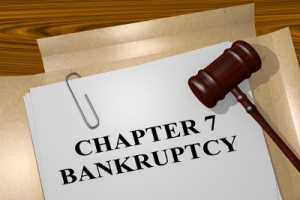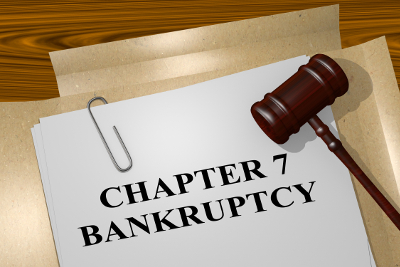Answers to Common Chapter 7 Bankruptcy Questions
 Consumers who’ve responsibly handled their finances, but suddenly find their situation in dire straits due to medical issues or employment loss, may wonder what Chapter 7 bankruptcy can do to aid their financial recovery.
Consumers who’ve responsibly handled their finances, but suddenly find their situation in dire straits due to medical issues or employment loss, may wonder what Chapter 7 bankruptcy can do to aid their financial recovery.
We put together these common questions in article form to help consumers like you decide whether Chapter 7 could offer the fresh start you’re looking for.
What does chapter 7 bankruptcy cover?
Unlike traditional debt consolidation which bundles your debts into one monthly payment, Chapter 7 eliminates debt as if it never existed. The debts which you can be discharged under this chapter include credit cards, medical bills, mortgages, personal loans, cash advances, civil judgments (i.e. landlord sued you), and in some cases, taxes. Child support and alimony arrearages, some taxes, criminal restitution and student loans (unless paying them would cause further hardship) are non-dischargeable debts.
Who qualifies for chapter 7 bankruptcy?
The Means Test, which determines whether your income is enough to pay some or all debts, is used to determine whether Arizona bankruptcy filers qualify to proceed. For a single member household, you must earn at or below $41,993.00 to continue filing without taking the entire means test; for two member households, the income ceiling is $55,022.00. The income limits incrementally increase from there based on household size.
How often can Chapter 7 bankruptcy be filed?
Petitions can be filed in Arizona once every eight (8) years. The eight year period begins from the date when you last filed, not when it was discharged. However, you can file Chapter 13 any time after your Chapter 7 has been discharged, with some trepidation:
- Filing Chapter 13 prior to the standard four-year waiting period means you’ll get rid of garnishments and levies, but cannot discharge remaining balances after your repayment plan. This means you’ll either pay them all off, or file Chapter 7 at the eight-year mark; but,
- Filing Chapter 13 will discharge debts if filed after the four-year standard waiting period after filing Chapter 7, provided you followed the repayment plan.
You can file Chapter 11 after your Chapter 7 discharge, although the costs would be overwhelming to most.
Can you file Chapter 7 bankruptcy without a lawyer?
Short answer? Yes. Be ready to face creditors without representation, an experienced bankruptcy judge who asks questions you may answer incorrectly due to nervousness, and the potential for an unwanted faceoff at the 341 Meeting. Most people hire an attorney as they’re much cheaper than you’d think – and do the job right.
Can you file Chapter 7 bankruptcy and keep your house?
Most people have debts they’re prepared to keep – such as their mortgage and vehicle. While you’re always welcome to reaffirm the debt, remember you’re obligated to pay any debts you carry through your bankruptcy. There will be no mercy if payments are missed. Creditors can and will impose fees and begin repossession even after missing one payment, so choose which debt you reaffirm wisely.
Can I file Chapter 7 bankruptcy and keep my car?
As you’ll undoubtedly want some form of transportation to continue working, reaffirming vehicles may be an option. However, if you’re upside down on your loan (owe more than it’s worth) by an astronomical margin, you may consider surrendering your vehicle. Almost immediately after you’ve filed, there will be droves of auto dealerships offering low to no down payment loans. So, keeping your vehicle could make sense if the equity isn’t too far negative, but may be equally prudential for you to let go given the opportunities you’ll have after discharge.
For all questions related to Chapter 7, 11 or 13 bankruptcy, make sure to follow our blog. Contact us if interested in filing today. Click here for information on the differences between Chapter 7 vs Chapter 13.


